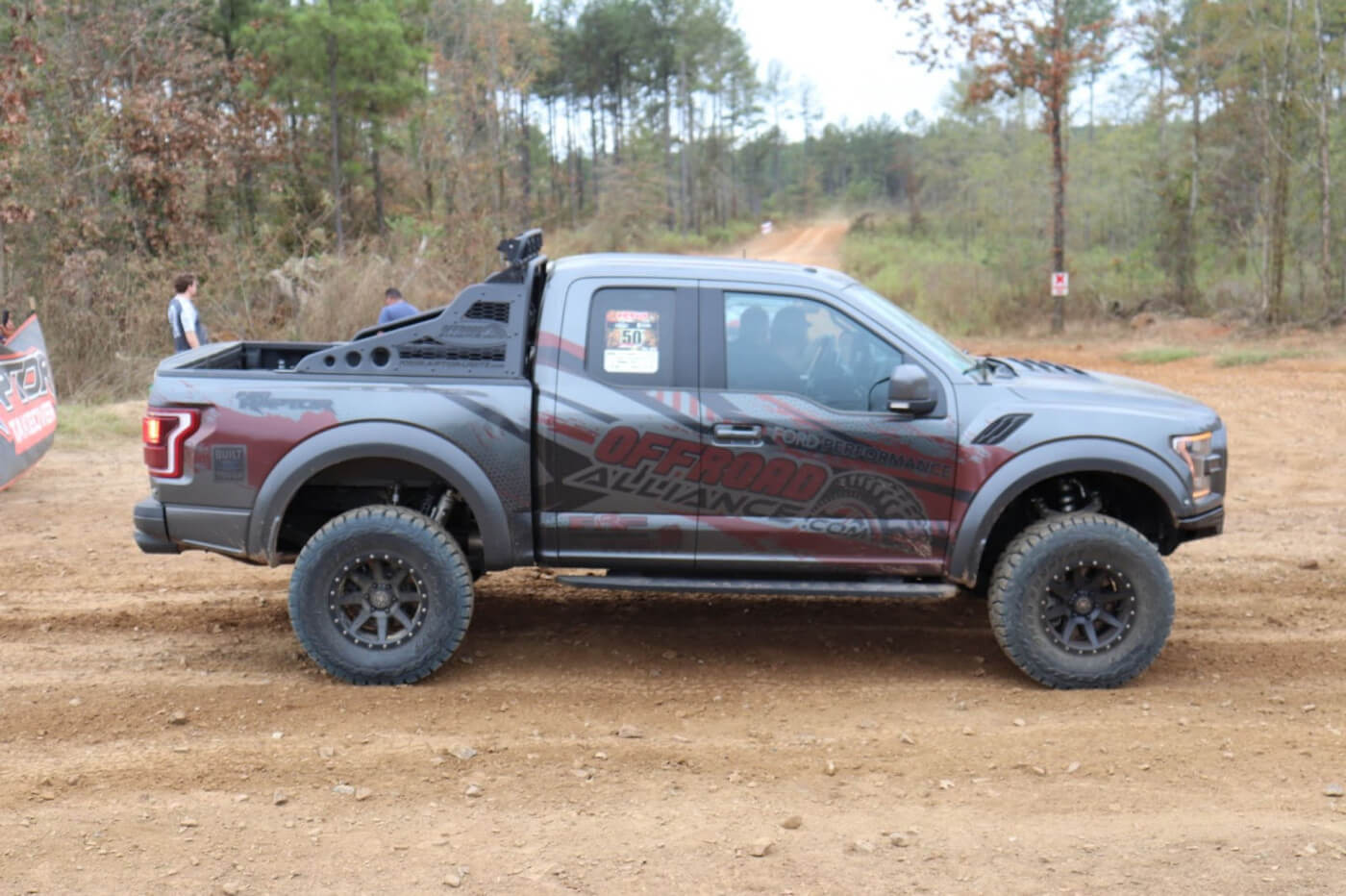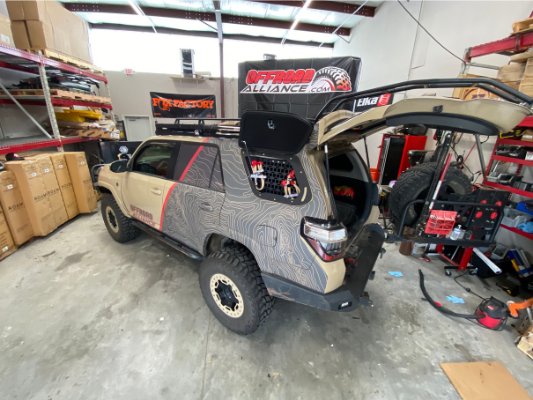
Off-Road Vehicle Maintenance Tips
If you own an off-road truck or SUV, vehicle maintenance is a way of life. You’ve built a customized vehicle with aftermarket parts and accessories that help you push both you and your vehicle’s limits. Much more than just a way to get from point A to point B, your beast represents a huge investment in time and money as well as blood, sweat, and tears. Off-road truck maintenance helps protect that investment while also helping you keep pushing in the garage and off the road as you strive to have the best off-roading experience possible.
Consistency Breeds Reliability
Customization is fun and exciting, but if you’re not turning a wrench (or having a mechanic do it for you) for maintenance, you’re not getting your money’s worth from your vehicle or the trips you take with it. Regular maintenance helps keep your vehicle’s systems running properly, protects them from excessive wear, and gives you the opportunity to spot issues before they grow into full-blown problems. Keeping your off-road truck maintenance on-point is the first step to your next successful outing. Maintenance is a chance for your vehicle to get a thorough inspection and the TLC it needs to keep playing rough.
The key to proper maintenance is to keep it consistent. For some owners, that means a spreadsheet or checklist breaking down what to do and when. For others, you can barely get them out of their vehicle and the garage, anyway, because they love to tinker and regular, constant upkeep is part of that. Whichever off-roader you are, develop a plan for vehicle maintenance that needs to be done after every big run as well as the manufacturer-recommended maintenance and upkeep milestones.
After You Play Hard
The next thing you need to know about vehicle maintenance on your customized vehicle is that the regular maintenance schedule recommended by your manufacturer may not be enough. In fact, it likely won’t be. When off-roading, you’ll put your vehicle through maneuvers, stresses, and impacts that upkeep practices for normal vehicles just can’t manage. That’s why your off-road vehicle maintenance should always start after you’ve taken your vehicle into the field for a workout.
When you get your vehicle home, you’ll want to clean and inspect it for any signs of abnormal or excessive wear and damage. Consider how your vehicle performed during the run. Perform an informal “after-action report,” considering and following up on any odd noises, shudders, smells, or performance issues you may have noticed while slinging mud, crawling rocks, or wheeling over uneven land. Be sure to check over your suspension components and differential cases for signs of leaks, dents in shock tubes, or other damage; tires for signs of uneven wear that could point to poor alignment; and off-road lighting upgrades for cracked lenses and burnt out bulbs.
Periodic Checks And Changes
Your vehicle’s regular maintenance schedule is designed to provide trouble-free operation under ideal conditions for the life of the vehicle. Off-roading isn’t “ideal conditions”, even if you have a heck of a run that you would consider ideal. Off-roading is tough, and that will change the frequency these periodic tasks need to be performed. Learn your vehicle maintenance recommendations, honestly consider how rough you push your vehicle, and use your best judgment to make a few adjustments:
- Oil Changes - While the old standard of 3,000 miles or three months between changes has largely been usurped thanks to advancements in automotive technology, with 5,000 and 7,500 miles between changes becoming the norm, heavy use may dictate new oil and filter much sooner.
Off-roading is dirty work. Your filters work hard to keep contaminants out of the system, but they can only do so much. Regular oil changes tailored to your vehicle’s use remove trapped contaminants and give your motor fresh oil to work with while protecting engine components and preserving your tuned horsepower.
- Transmission and Differential Fluid - Most manufacturers suggest changing these fluids between every 30,000 to 60,000 miles. Your transmission and differential contain a myriad of precision gears that manage the power transfer from your motor to the axles and eventually the wheels. Under heavy use, temperatures in these components start to rise, degrading the ability of these fluids to lubricate gears. The fluid can also collect metal particulate, dust, and even water, especially if a housing, cover, or skidplate is cracked or otherwise damaged. All of these can lead to a major system failure that leaves you with a custom-built paperweight.
Anytime external damage to your transmission or differential case or cover is noted, it should be followed up on. If you regularly take your vehicle off-road, you need to halve the recommended miles between checks and changes. This gets rid of fluids that have degraded or contaminated while also giving you another opportunity to spot and address any damage. Remember to choose quality fluids for replacement that meet or exceed manufacturer recommendations.
- Air FIlters - Your vehicle’s air filters keep dust and debris from getting pulled into the motor. Clean air is necessary for combustion. Oxygen mixes with fuel in pressurized chambers where it ignites, expands, and drives the pistons to create your engine’s power. Most manufacturers suggest an annual replacement to help protect your horsepower by keeping your airflow strong.
In case it wasn’t clear from the dust and mud you wash off your truck regularly, off-roading murders air filters, and off-road truck maintenance needs to include more frequent replacement. This is especially true if you’ve tuned your truck for an aftermarket cold air intake, making blockages even more devastating to your power output. You should check your air filter every oil change, replacing it anytime your vehicle’s airflow may be suffering.
- Tires - One of the most important off-road upgrades you can make is with the only part of your vehicle that (intentionally) regularly contacts the ground. That makes them an important part of your regular vehicle maintenance. We all know the mileage statistics manufacturers tout when you buy tires are laughable under off-roading conditions. That’s why they need regular attention.
You’ll want to rotate your tires every 7,500 miles to combat the ware of hard maneuvering on rough land. Signs of uneven or inordinate wear may point to alignment or suspension issues. Don’t forget to check your aftermarket wheels for any signs of damage during tire maintenance, as addressing issues in the garage is far more comfortable than trying to fix them on the trail. Even under optimal circumstances, your tires will wear out, so it’s important to keep an eye on tread depth and overall tire condition to make sure your vehicle is running on safe rubber, on and off the road.
As Needed
While this covers most of your regular and customary vehicle maintenance needs, it doesn’t address every vehicle system, but many of these will be highly dependent on their condition and whether or not they’re still functioning correctly. Many systems, like the shocks, struts, and springs of your suspension, take a lot of use and abuse off the road and should be inspected after a big outing, but absent signs of damage, replacement should be done when you feel performance is degrading. Likewise, batteries over time will degrade, but they do so at rates that make standardizing a replacement schedule difficult.
When Replacement Is Needed, Choose Quality
As it’s time to replace or upgrade parts, make sure you’re choosing brands you can rely on and a supplier that backs quality off-road parts with old-school customer service. This can save you money and headaches on future off-road truck maintenance, as better parts tend to perform better and last longer. Keep up with your vehicle maintenance and order your replacement parts from Offroad Alliance.




